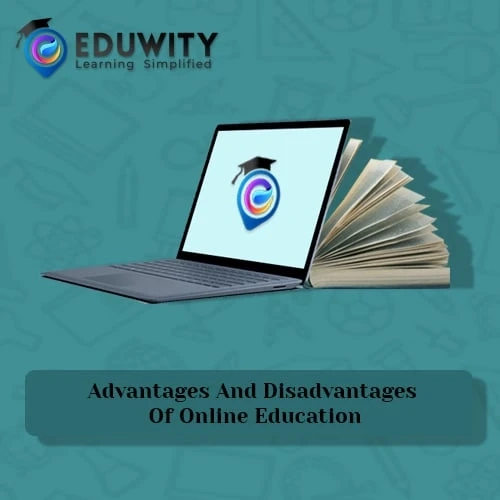Education is an essential part of our life. It makes our future, and if not taken care of properly, it can also spoil. In the changing era, everything is going digital today, and education is not behind in this matter. The process of learning and teaching in online education takes place through electronic mediums. All around the world, educational institutions are leaning towards online learning platforms to continue educating students. The new standard now is a transformed and unique concept of education, with online learning being the core of this transformation. Digital learning today has emerged as a valuable resource for students all over the world. Online education relates to the use of electronic applications and devices and learning processes. Online education enables students to gain creative experience through technology. This type of education takes place outside the classroom through digital platforms. Online education can be delivered through various multimedia like lessons, animation, videos, audiovisuals, images, and many more. As with most types of teaching methods, online learning also has its positives and negatives. Decoding and understanding these positives and negatives will help educational institutions create more efficient strategies in delivering the lessons and ensuring an uninterrupted learning journey for the students. Online learning is not just applicable to learn academic subjects but also to learn extracurricular activities. The demand for online education has risen significantly, and it will continue doing so soon. The online learning environment is dynamic in nature, and hence it keeps changing continuously and presents fantastic learning opportunities. This type of learning is very effective as students learn responsibility and self-discipline. The most significant advantage of taking an online course or opting for online education is that the teacher is available at all times! Everything you need is available and is at your disposal. You can get announcements, access notes, review assignments, take quizzes, chat with your classmates and study anytime you want to. Students can study anytime they want to learn. Online education gives you the flexibility to spend time with work and allows you to do any activity you like and still have the time to study. Online lectures/ education will enable students to access the course or learning material at a time of their own comfort. Many students are not comfortable asking questions in front of the entire class. The internet eliminates the fear and makes them feel comfortable. Instead of asking the teacher while the course is going on, the student can post the question in the chatbox during the classes or email them to the teacher and get their answer directly. The opportunity to learn is enhanced as all their doubts are cleared. Another advantage of online education is that it allows students to attend classes from any location of their choice. Instead of being restricted by geographical boundaries, schools will reach out to a more extensive network of students. Online lectures can be recorded, archived, and shared for future reference; this allows students to access learning material at any time. This type of learning will enable you to participate from wherever you are in the world. Another advantage of online learning is reduced financial costs. Online education is more feasible as compared to physical learning. This is because online learning waives the cost of transportation, meals, and real estate. Additionally, all the sources of study materials are online, thus creating a paperless environment that is affordable and super beneficial to the environment. Every student has a different learning style and method. Some students learn visually, while others learn through audio. Some students thrive in the classroom, and some get distracted by large groups. With its range of options and resources, the online learning system can be personalized in many ways. The best way to build a comprehensive learning environment revised to the needs of each student. If you are very busy and want to add spice and value to your resume, online education is great for you. There is no specific schedule. You can take classes whenever you have the time. Therefore it makes it easy to squeeze at any time. One of the biggest challenges is the struggle with focusing on the screen for a long time. There is an excellent chance of students getting distracted by social media sites or any other web page with online learning. The teachers must keep the online classes crisp, engaging and interactive to help students stay focused on the lesson. Another critical challenge of online classes is internet issues. A consistent internet connection with decent speed might be a problem in semi-urban areas. Without a fast internet connection, there can be a lack of continuity in learning for the child. Students can learn a lot being in the company of their friends. In online classes, there is little contact and interaction between the students and teachers. This sometimes often results in a sense of isolation for many students. It is given that the school should allow for other forms of communication between the students and teachers and their friends. This can include messages, emails, and video conferencing, which allows face-to-face interaction and reduces the sense of isolation. It is, of course, clear that online education surpasses its disadvantages. Eduwity enables educational institutes to integrate online learning with traditional training. This helps create a more efficient educational practice that improves student engagement while also enhancing student-tutor interaction.
Convenience:
Advantages And Disadvantages Of Online Education


